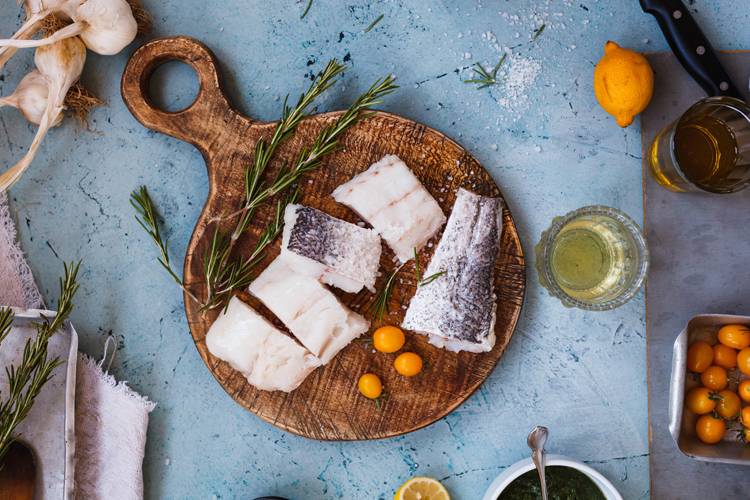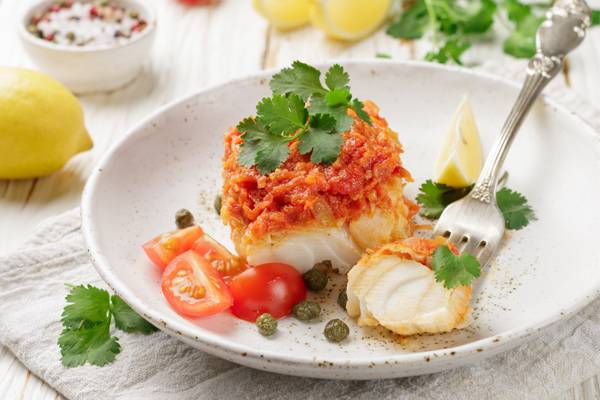Line Caught-Hake
Merluza is one of the most popular vaireties of white fish, mainly due to its gentle flavour as that allows it to be used for a large variety of dishes. It can be served in many ways. You can boil the tails, cook slices in batter or stew them in a delicious green sauce.
fresh food
Share

There are various species of Hake, but the most popular thanks to its texture and flavoure is the Muerluccius merluccius, which is the one we sell at Consum. Because of the way it’s caught, the most prized type of hake is line caught which is done close to the shore, about 30km out.
It’s called ‘line-caught’ for the way it’s caught as it’s done with a rod with a fishing line with hundreds of hooks on which the hake become caught.
This way of fishing is more selective than others as it is done to catch a certain species, lowering the number of other species that are accidetally caught. When caught in this way the hake don’t suffer so many impacts and bruises. That means that the fish are fresher and have a silver colour and reflective skin.

What it provides us with
Hake is a white fish with a low amounts of fatty tissues and calories. It provides about 65 calories and less than 2 grams of fat per 100 grams. Thanks to its low calorie conent, hake is considered to be a great food for those that are overweight or obese or even those on low sodium diets, given that they have a low content of it. However, this is only if it’s cooked in a way that means more fat isn’t added to the food like, for example, being grilled or baked.
The meat of line-caught hake is white and has a delicate flavour, which is very easy to digest. All ages ewnjoy it, from the youngest to the oldest amongst us. What’s more, it can be used just as you find it in the supermarket (fillets, slices, loins, tail…) and in different dishes when blended for anyone who has trouble eating a whole fish (mainly children and elderly people).
Content per 100 gram portion
| Proteínas (g) | 11,8 |
| Grasas (g) | 1,8 |
| Hierro (mg) | 1,10 |
| Magnesio (mg) | 24,1 |
| Potasio (mg) | 270 |
| Fósforo (mg) | 190 |
| Zinc (mg) | 0'37 |
| Yodo (mg) | 18 |
| B1 o tiamina (mg) | 0,09 |
| B1 o riboflavina (mg) | 0'09 |
| B3 o niacina (mg) | 6'1 |
| B9 o ácido fólico (mcg) | 12'3 |
| B12 o cianocobalamina (mcg) | 110 |
| mcg = microgramos |
Preparation
The way you cook the hake will depend on the cut. For example, you can boil the tails, cook slices in batter or stew them in a green sauce (the most typical way of preparing this fish), barbecue the loins or bake the nape.
The most prized part of this fish is the ‘cocochas’, which is a meaty area with a characteristic texture. These are normally cooked ‘pil-pil’ style or battered.






